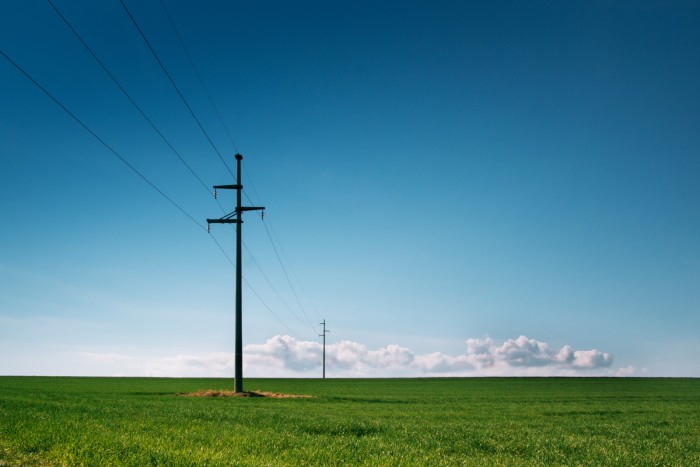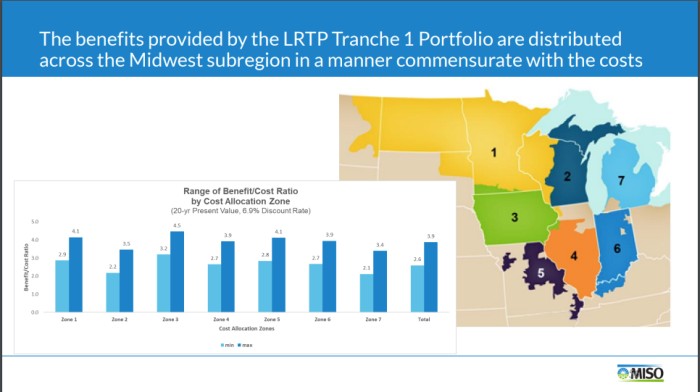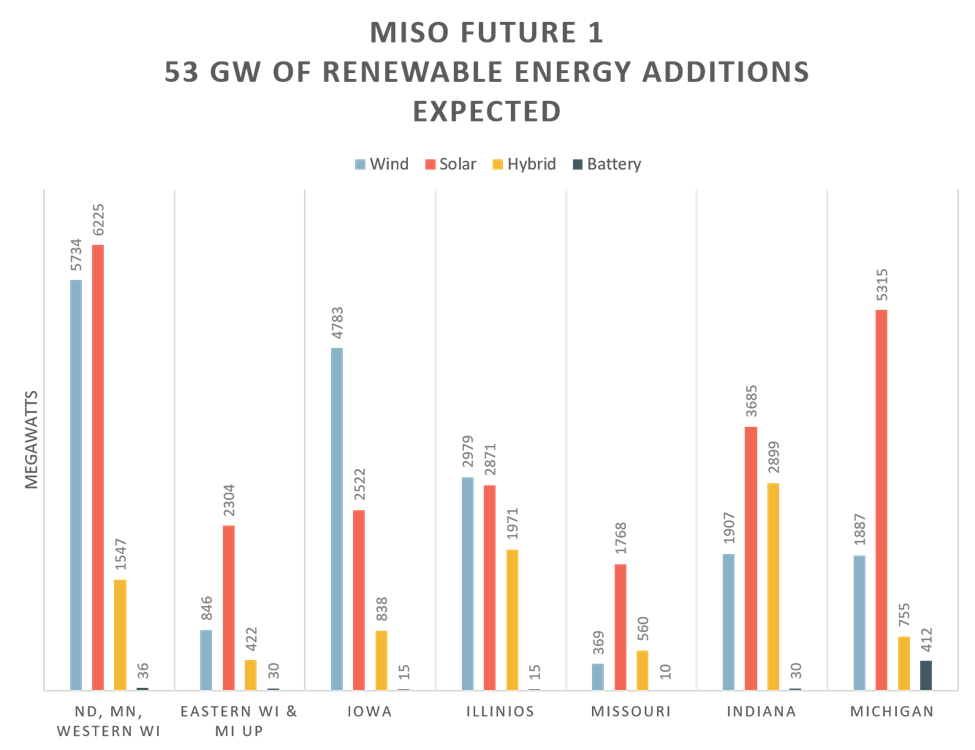Vision for the future spells more renewable energy and more jobs
 | Natalie McIntire, Technical/Policy Consultant |
 Single Transmission line
Single Transmission line | Natalie McIntire, Technical/Policy Consultant |
Having 20/20 vision is the gold standard for visual clarity. MISO's Long Range Transmission Planning process, however, is a big step closer to this standard. Their visionary approach looked at utility resource plans and state clean energy goals, then they modeled the new resources expected to come online in the region over the next 20 years. With this wide-angle lens, they finalized a portfolio of regional transmission line projects that is the largest of its kind in the United States.
After two years of study, this proposal identified 18 transmission projects that are projected to provide $37 billion in financial benefits over 20 years on a $10.4 billion investment. These lines are designed to support the electricity generation shift toward new clean resources like wind, solar, and storage that are already underway in our region.

In order to make this shift reliably, the region needs more transmission to deliver that energy to load, and to maintain a stable grid with the increase in variable generation.

If you build it, they will come
The Long Range Transmission Planning process has come none-to-soon. It has been 10 years since MISO approved a portfolio of transmission projects. The Multi-Value Project (MVP) portfolio of 17 new transmission lines was approved in 2011 and were designed to support the new clean generation needed to meet the state clean energy goals at that time. The MVPs were originally projected to cost an estimated $5.1 billion, and support about 25,000 megawatts of new clean generation. The old adage of "if you build it they will come," held true. Those lines did in fact help support significant wind generation. Installed wind capacity in the Midwest grew to approximately 28.5 gigawatts. Those lines are already fully subscribed, with one line yet to be built, and this next set of lines is desperately needed for utilities in MISO North to continue their shift toward cleaner electricity. The new LRTP lines will not only help support the shift to higher amounts of clean electricity generation, and increase resilience and reliability, but they will create good, family-supporting jobs in our region, too.

Facilitating the energy transition also means jobs
MISO's Future 1 model shows that we are expecting about 53 gigawatts of capacity from new wind, solar, hybrid and battery storage projects to come on line over the next 20 years. This is enough new generation to power about 12 million homes with clean, renewable electricity. Building these new generators will support approximately 209,000 jobs. Building the new transmission lines identified in MISO's LRTP Tranche 1 portfolio are expected to contribute another 120,000 jobs. Combined, that's about 329,000 jobs from the transmission work and renewable resource construction.
The bottom line is that renewable energy development not only provides low-cost, clean energy for homes and businesses across the nation, helps keep our air and water clean, contributes to energy independence, but it is also a job creator for Americans. Developing renewable energy and the transmission lines to support it makes good environmental and economic sense. With the benefit of the visual foresight from this report, MISO should move forward as quickly as possible to build tranche 1 of the LRTP lines so that these many valuable benefits can begin flowing to consumers.